Homemade Lemon & Lime Curd: Your Guide to Zesty Perfection
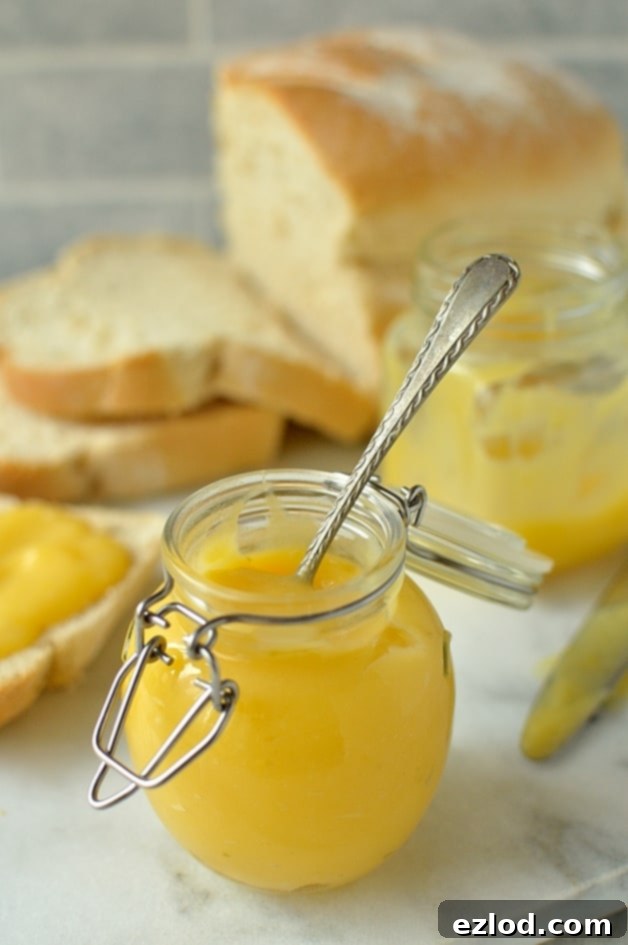
There are few culinary delights as intensely satisfying and wonderfully versatile as a perfectly crafted fruit curd. And when it comes to fruit curd, nothing quite compares to the vibrant, tangy, and utterly addictive flavor of homemade lemon and lime curd. This isn’t just a spread; it’s an experience – a burst of sunshine in every spoonful that elevates simple toast to a gourmet treat and transforms desserts into masterpieces.
Confession time: I rarely make fruit curd, and there’s a very simple, albeit dangerous, reason why. I simply cannot resist it! A freshly made batch of this exquisite lemon and lime curd has a shelf life of approximately a week in my household, almost entirely consumed by me. It’s truly that dangerously addictive! The sheer joy of its bright, zesty notes and incredibly smooth, creamy texture makes it utterly irresistible. Once you’ve tasted the homemade version, you’ll find it incredibly difficult to go back to anything shop-bought. Store-bought curds, while convenient, often contain artificial flavors, excessive sugar, and lack the vibrant, fresh punch that homemade curd effortlessly delivers. Making it from scratch ensures you control the quality of ingredients, resulting in a superior product that truly shines.
Beyond its irresistible flavor, what truly makes this citrus curd a kitchen hero is its remarkable versatility. It’s not merely a delightful spread for your morning toast, though it excels at that. Imagine it generously slathered onto warm, crusty bread, or perhaps enriching a fluffy scone, ideally paired with a dollop of clotted cream. But the possibilities extend far beyond breakfast. This silky, sharp, and sweet concoction works wonders as a luxurious filling for a myriad of baked goods. Picture a delicate lemon and lime tart, its buttery crust cradling a luscious, golden curd, perhaps topped with a delicate meringue. Envision light-as-air doughnuts or éclairs bursting with this vibrant filling, offering a surprising burst of zest with every bite. It can elevate a simple sponge cake into a sophisticated dessert, layered between fluffy cake and rich buttercream. Swirl it through homemade ice cream or a simple pot of natural yogurt for an instant flavor upgrade and a delightful texture contrast. It’s also magnificent on pancakes and waffles, adding a gourmet touch to your brunch. For more adventurous cooks, this tangy curd can even be incorporated into more complex dishes like steamed puddings or elegant soufflés, offering a delightful counterpoint to richer flavors and a lift to the palate. The applications are virtually endless, making this recipe a truly invaluable addition to your culinary repertoire, promising endless creativity in the kitchen.
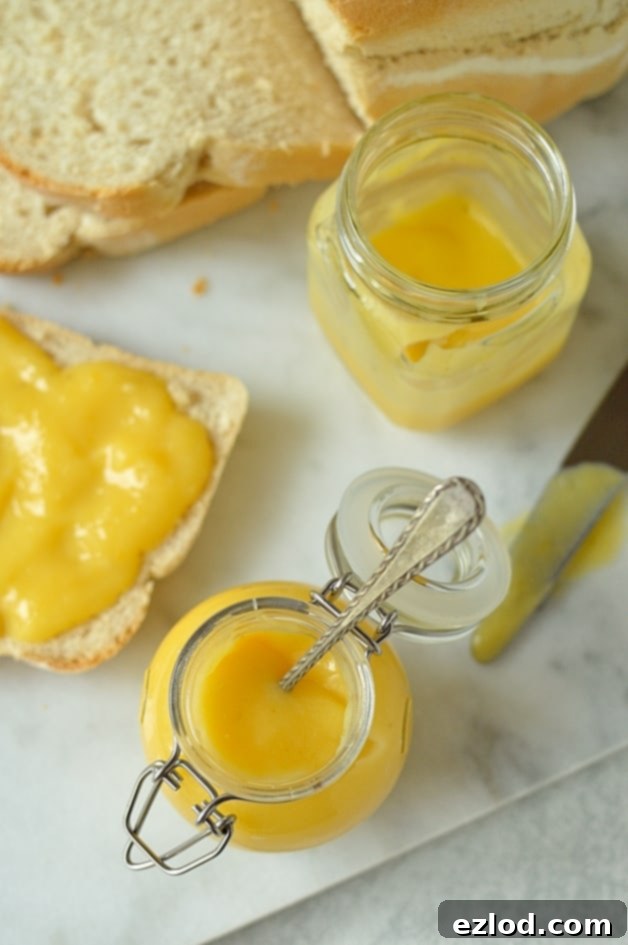
The Zesty Magic: Combining Lemon and Lime for Unforgettable Flavor
While classic lemon curd holds a special place in many hearts, exploring variations opens up a world of exciting flavors. I’ve previously ventured into creating luscious passion fruit and vibrant orange curds, each bringing its own unique character. This time, however, I wanted to introduce a delightful twist by combining the bright acidity of lemon with the distinctive floral, slightly herbaceous, and often more intensely aromatic notes of lime. The synergy between these two citrus fruits creates a complex and wonderfully balanced flavor profile that stands out from a single-fruit curd. The lemon offers a familiar, sunny brightness, while the lime adds an intriguing layer of sophistication and a deeper, more exotic tang.
For those who adore the intensely sharp flavor of lime, you certainly have the option to use all lime juice. If you choose this path, you’ll need approximately 200ml of lime juice, which typically comes from about 6-7 medium-sized limes, depending on their juiciness and freshness. However, the blend of lemon and lime offers a harmonious balance that many find irresistible, creating a more rounded yet still intensely zesty experience. The key to any truly exceptional citrus curd, in my opinion, is that delightful, almost lip-puckering sharpness. This isn’t a subtle background note; it’s a bold declaration of fresh citrus flavor that cuts through the sweetness and richness. To achieve this intense flavor, I always incorporate the finely grated zest of both the lemons and limes. The zest contains concentrated essential oils that provide a depth of aroma and taste that juice alone simply cannot. These oils are where the true character of the fruit resides, imparting a brighter, more complex citrus profile. While some prefer a perfectly silky-smooth curd, you can easily sieve out the zest after cooking if desired, leaving behind only the pure, unadulterated essence of citrus. This step is entirely optional and depends on your textural preference.
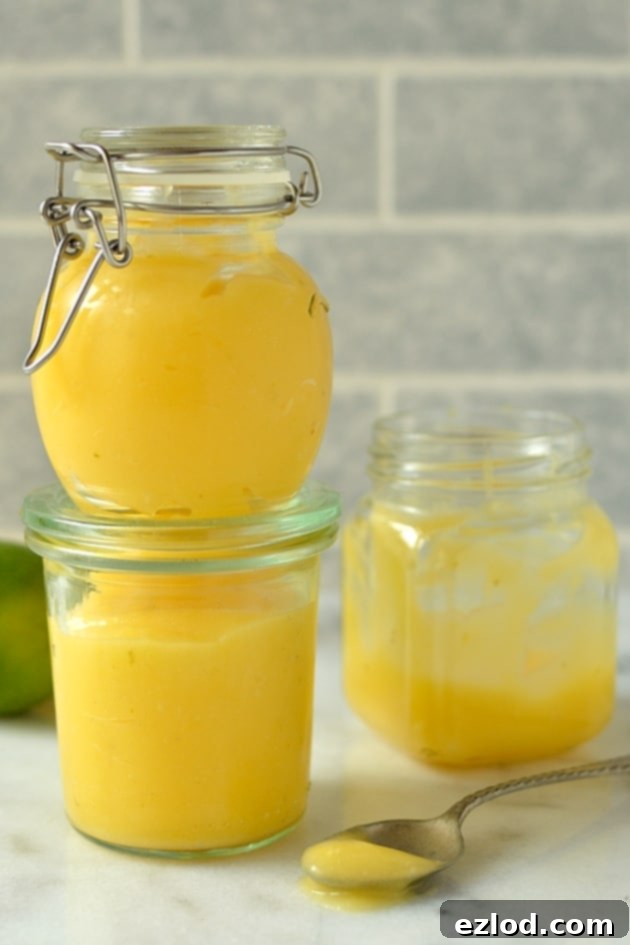
Mastering the Art of Curd: The Bain-Marie Method for Perfect Smoothness
The secret to achieving that coveted, perfectly smooth, and creamy texture in your lemon and lime curd lies in one crucial element: patience, especially when cooking over a bain-marie. A bain-marie, or water bath, involves setting a heatproof bowl containing your curd mixture over a pan of simmering water, ensuring the bottom of the bowl doesn’t touch the water. This gentle, indirect heat is absolutely essential for coaxing the eggs to thicken the curd gradually and evenly. Without this method, the high direct heat of a stovetop could quickly lead to disastrous results – specifically, scrambled eggs suspended in your delicious citrus mixture, an outcome no one desires. Eggs, particularly the whites, are delicate and will seize and cook rapidly under direct, high heat, leading to a lumpy, unappetizing consistency.
It might feel like it takes a while for the curd to thicken, perhaps 10 to 15 minutes or even more, but resisting the urge to increase the heat is paramount. The goal is a slow, steady transformation. As the mixture heats, the egg proteins slowly coagulate, thickening the liquid into a luscious, custard-like consistency. Continuous stirring is also important during this stage to ensure even cooking and prevent any part of the mixture from sticking to the bowl and overcooking. You’ll know it’s ready when it coats the back of a spoon, and when you run your finger across the spoon, it leaves a clean trail. Another good indicator is when it reaches a temperature of around 80-82°C (175-180°F), if you’re using a thermometer. At this point, it will be thick, creamy, and custard-like, but still pourable. Even with the most careful and gentle cooking, you might occasionally notice a few tiny flecks of cooked egg white. This is a common occurrence and nothing to worry about, as egg whites cook at a slightly lower temperature than egg yolks. If this happens, simply pour your thickened curd through a fine-mesh sieve once it’s off the heat. This quick step will remove any small imperfections and ensure your curd is flawlessly silky-smooth, exactly as it should be, ready to be enjoyed or stored.
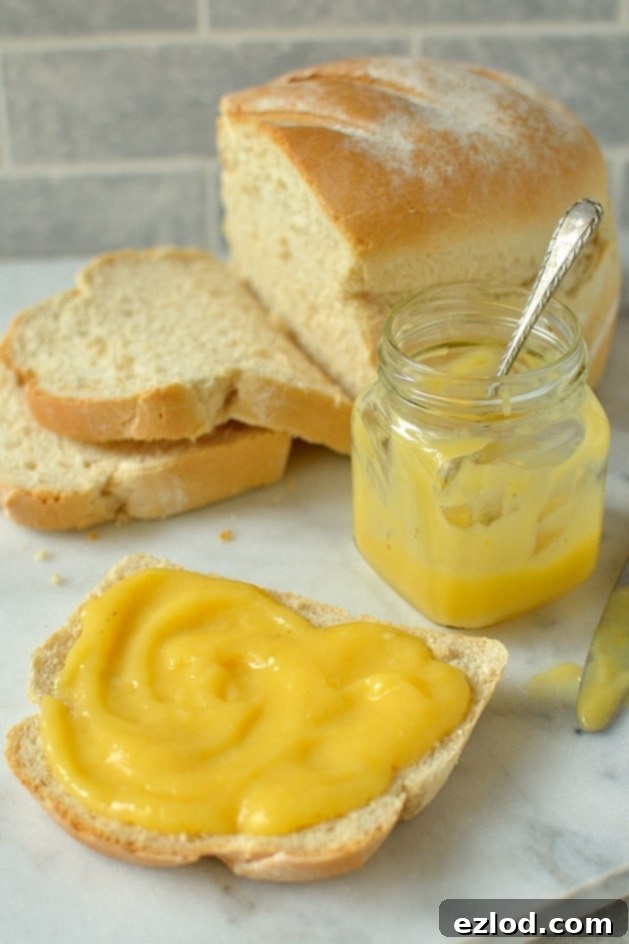

Lemon & Lime Curd
Ingredients
- finely grated zest and juice of 2 limes (65ml)
- finely grated zest and juice of 3 large/4 small lemons (135ml)
- 230 g (1 cup + 2tbsp) caster sugar
- 125 g (½ cup + 1tsp) butter
- 4 large eggs
Instructions
-
Put the lemon and lime zest and juice, the sugar and butter into a heatproof bowl set over a pan of simmering water, making sure that the bottom of the bowl doesn’t touch the water. Stir with a whisk every now and again until the butter has melted.
-
Lightly whisk the eggs with a fork, then whisk into the lemon mixture until well combined. Let the curd cook, stirring regularly, for 10 minutes or so, until it is thick, creamy and custard-like.
-
Remove from the heat and pour the curd through a sieve if you want to remove the zest. Stir occasionally as it cools then pour into sterilised jars and seal. It will keep for a couple of weeks in the refrigerator.
Notes
Beyond the Jar: Creative Ways to Enjoy Your Lemon & Lime Curd
Once you’ve mastered this simple yet impressive lemon and lime curd recipe, you’ll discover a world of culinary possibilities. Its vibrant flavor and luxurious texture make it far more than just a spread; it’s an ingredient that can elevate both simple snacks and elaborate desserts. Here are just a few ideas to inspire you to incorporate this homemade delight into your daily meals and special occasions:
- Breakfast & Brunch Brilliance: Ditch the ordinary jam and elevate your morning. Spoon generous dollops onto freshly made pancakes or waffles, perhaps with some fresh berries for a burst of color and extra flavor. Transform your toast, crumpets, or English muffins with a thick, glossy layer of this zesty curd. It’s also incredible spread onto warm, fluffy scones with a little clotted cream or whipped cream for a truly indulgent British-inspired treat. For a lighter option, swirl it through plain Greek yogurt, cottage cheese, or oatmeal for a refreshing kick that awakens your taste buds.
- Divine Dessert Fillings & Toppings: This curd truly shines as a filling. Use it in classic tarts, pairing beautifully with a buttery shortcrust pastry and perhaps a sprinkle of toasted coconut or a torched meringue topping. Fill homemade doughnuts, éclairs, or choux pastry with the creamy curd for a delightful, tangy surprise. Layer it between sponges for a stunning cake, creating a multi-layered citrus sensation, or use it to fill individual mini curd tarts for elegant portion control at your next gathering. It’s also a perfect topping for pavlovas or meringues, where its sharp flavor beautifully balances the sweetness.
- Cheesecake & Mousse Magic: Incorporate the lemon and lime curd directly into cheesecake batter before baking for an infused citrus flavor that permeates every bite, or simply spread a thick, glossy layer over a chilled cheesecake for a bright, tangy topping that’s visually appealing and incredibly delicious. Fold it into a light mousse, a creamy panna cotta mixture, or even a basic whipped cream to create sophisticated, zesty desserts with minimal effort.
- Ice Cream & Sorbet Swirls: For a refreshing summer treat, swirl chilled curd through homemade vanilla ice cream or gelato. It adds a beautiful ripple and an explosion of flavor that cuts through the richness of the dairy. You can also mix it into a sorbet base for a naturally creamy and vibrant frozen delight, creating a more complex and satisfying texture than a plain sorbet.
- Puddings & Soufflés: Don’t limit yourself to cold applications. Incorporate the curd into steamed puddings for a moist, flavorful center, or use it as a base for elegant lemon and lime soufflés, where its sharp notes balance the airy texture, creating a dessert that is both light and intensely flavorful. It can also be served warm alongside fruit crumbles or apple pies.
- Cocktail & Beverage Enhancer: A spoonful of lemon and lime curd can even lend a sophisticated twist to cocktails, adding both sweetness and a concentrated citrus punch. Stir it into sparkling water for a refreshing spritzer, or add a dollop to hot tea for a comforting, flavorful beverage.
These suggestions are just the beginning; let your imagination guide you. The bright, clean flavors of lemon and lime curd complement a wide array of dishes, making it a truly versatile staple in any kitchen. Experiment and discover your own favorite ways to enjoy this homemade treasure!
Storage Tips for Your Homemade Curd and Ensuring Freshness
Proper storage is essential to ensure your delicious homemade lemon and lime curd stays fresh and safe to eat. Once prepared, this recipe typically yields about 500ml of exquisite curd, which can be stored for several weeks, if not devoured sooner!
To maximize its shelf life and maintain its pristine quality, always store your curd in clean, sterilized jars. Sterilizing jars is a simple yet crucial process: wash them thoroughly in hot, soapy water, rinse them well, and then place them upside down on a baking tray in a preheated oven at 130°C (275°F) for at least 15 minutes. Alternatively, you can run them through a hot cycle in your dishwasher. It’s imperative that the jars are completely dry before filling to prevent any moisture from compromising the curd. Pour the warm curd into the sterilized jars, leaving a small headspace (about half an inch) at the top, then seal them tightly with their lids. This airtight seal helps to prevent air exposure and contamination.
Once cooled to room temperature, store the sealed jars of curd in the refrigerator. Homemade fruit curd, without the added artificial preservatives commonly found in commercial versions, will generally last for approximately two to three weeks when properly refrigerated. To ensure safety and freshness, always use a clean spoon each time you dip into the jar to prevent introducing bacteria. Before consuming, always check for any unusual smells, discoloration, or signs of mold; if any are present, it’s best to discard the batch to ensure food safety.
For longer storage, fruit curd can also be successfully frozen. Transfer the cooled curd into freezer-safe containers or jars, again leaving at least an inch of headspace as the curd will expand slightly when frozen. It can be kept in the freezer for up to three months without significant loss of quality. Thaw it slowly in the refrigerator overnight before use, and give it a good stir with a whisk before serving to restore its smooth consistency and creamy texture. Freezing is an excellent option if you’ve made a large batch or want to prepare it ahead for future baking projects or gifts.
Making your own lemon and lime curd is a rewarding experience that produces a superior product to anything you can buy in a store. Its vibrant flavor, silky texture, and incredible versatility make it a joy to create and an even greater joy to consume. So, embrace the zest, be patient with the heat, and prepare to fall in love with your homemade citrus masterpiece – a taste of pure sunshine, ready to brighten any day!
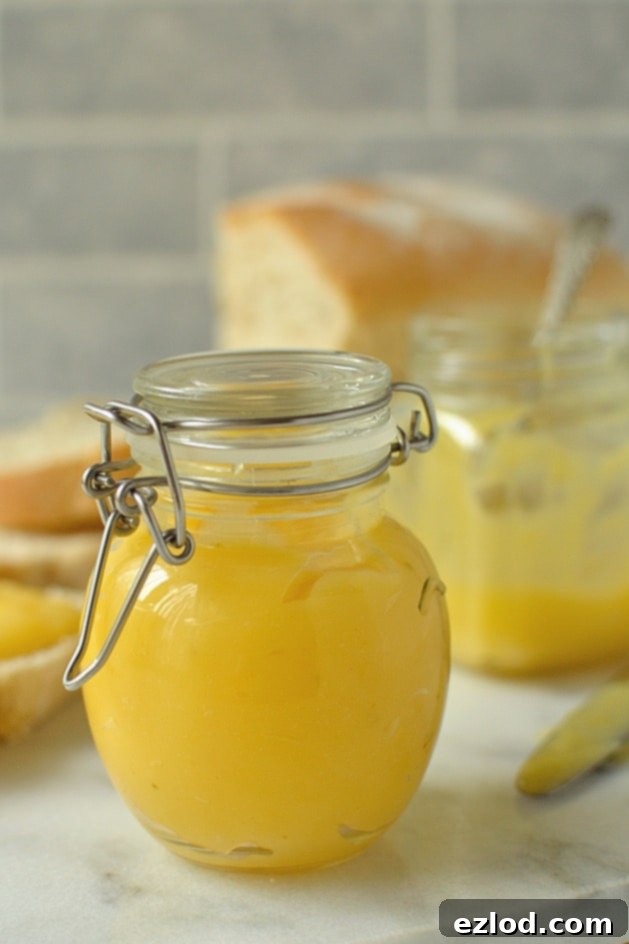
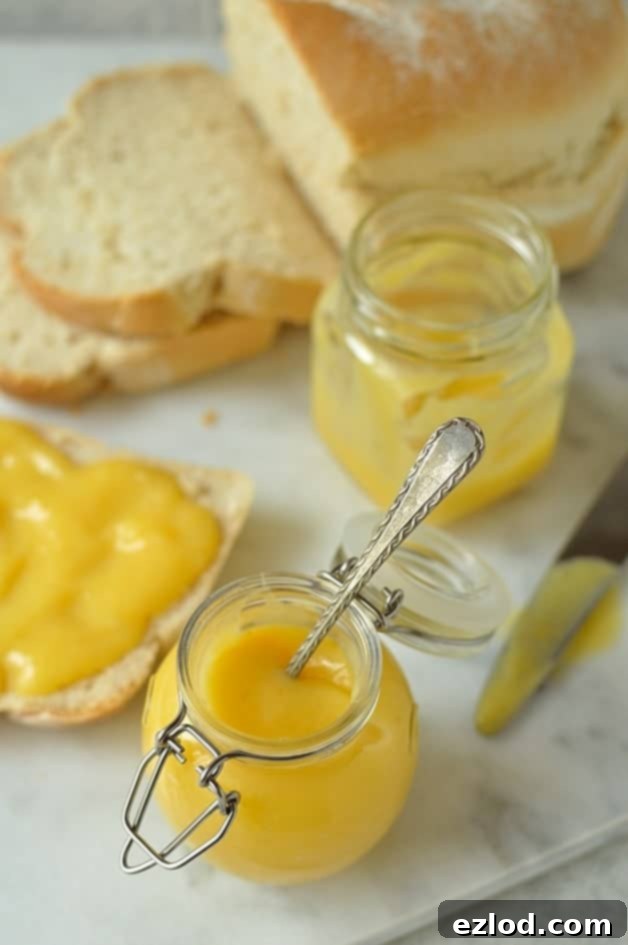
I am sharing this with Fiesta Friday hosted by The Frugal Hausfrau and French Gardener Dishes, Foodie FriDIY and Friday Features